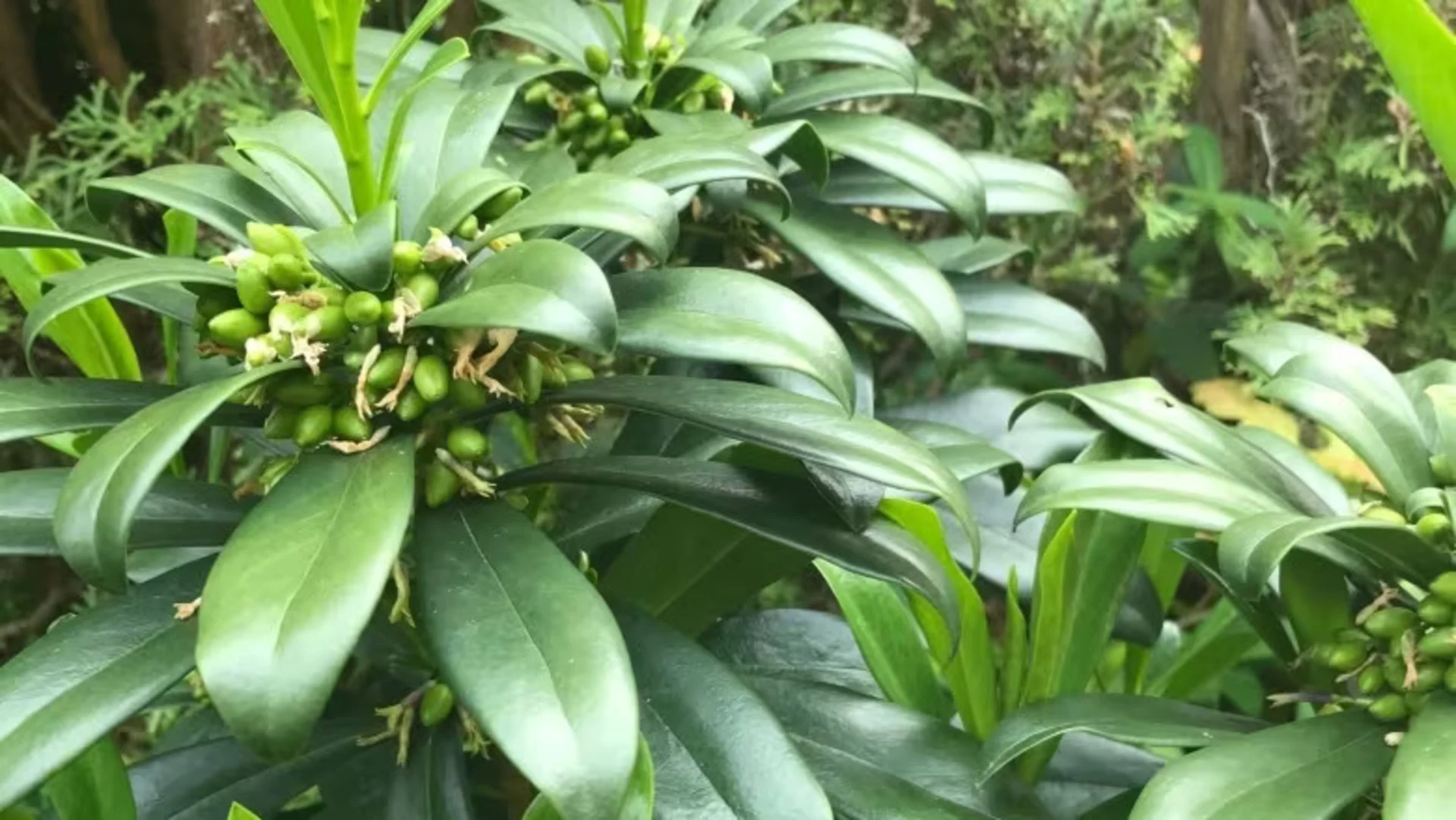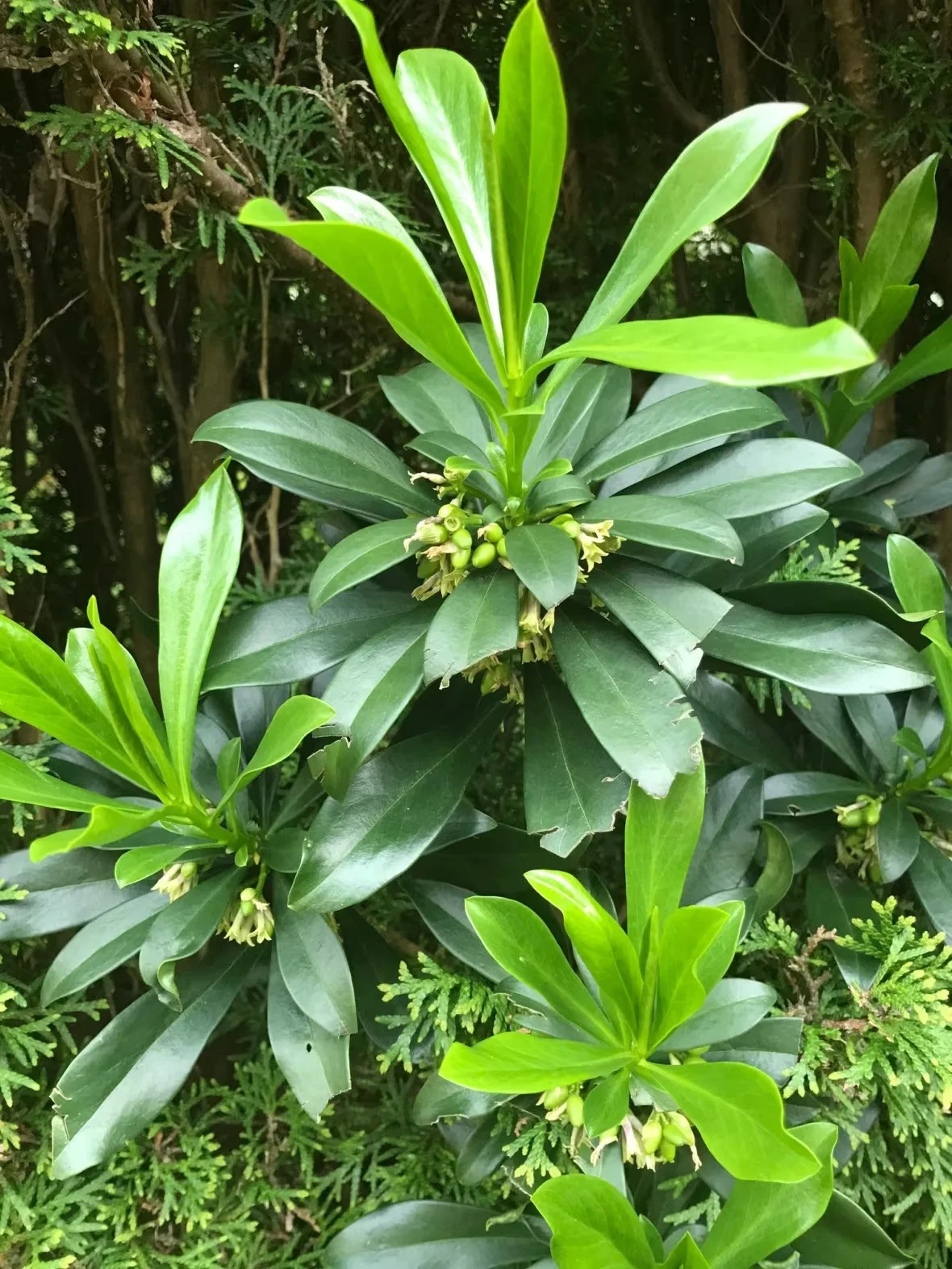
Pretty but toxic: Vancouver Island residents warn of invasive plant spreading
Residents in Comox, B.C., are warning others in their area about a toxic, invasive plant that has been spotted in other parts of the province and is now spreading from a local golf course.
Pat Grappolini was gardening at the back of her condo building, which borders the Comox Golf Club on Vancouver Island, when she noticed a pretty evergreen shrub.
"I thought, how lovely, we should have more of these growing," Grappolini said over the phone from Calgary, where she lives most of the year. "Then I found out what it was — that it was just terribly toxic."
Grappolini did some research and discovered the small evergreen shrub was Daphne laurel, also known as spurge laurel.
According to the Invasive Species Council of B.C., the plant's toxic sap can cause skin rashes, nausea, swelling of the tongue, even coma. A one-sheet from WorkSafeBC says a child in Nova Scotia once died from eating the small, black berries on the shrub.
Gail Wallin, executive director of the Invasive Species Council of B.C., says spurge-laurel can quickly take over native vegetation.
SEE ALSO: Learn more about black henbane, the invasive plant taking hold in Alberta
"When you introduce a foreign species like this, you're actually upsetting the balance of nature there and will be creating a loss of habitat or food supply," Wallin said.
Spurge-laurel has been spotted in Metro Vancouver, Vancouver Island and the Gulf Islands.
Grappolini says she first discovered the shrub a couple of years ago and removed it from the strata grounds.
She wore gloves, a mask and boots to protect herself against the sap and any airborne droplets, as recommended by WorkSafeBC.
But earlier this year, Grappolini spotted the spurge-laurel again, she says.
"It's back with a vengeance," she said. "I went on a mission to get rid of it around our ... apartment building and then saw that it was all over."
Grappolini says the plant has infested the Comox Golf Club and is spreading to the surrounding properties.

Daphne laurel, or spurge laurel, is a small flowering evergreen shrub that produces black berries. The berries and the plant's sap are toxic and have been linked to a fatality in Nova Scotia. (Submitted by Pat Grappolini)
Co-ordinated approach called for
Another person on Grappolini's strata, Pat Sloan, reached out to Comox city council about the plant. Council discussed the matter at a meeting on Wednesday evening.
Councillors said the Comox Golf Club is responsible for managing its grounds.
When CBC News contacted the golf course, pro shop manager Sanda Sidl said it was the first she had heard of the issue, but the groundskeeper was looking into it and would make sure it was "promptly resolved."
Grappolini says she wants to see a co-ordinated approach to remove the plant and keep it from spreading.
RELATED: Meet the world's noisiest insect
"Will it take the death of a child to make it happen? That's what I'm concerned about," she said.
According to the Invasive Species Council of Metro Vancouver, there is currently no legislation in B.C. banning the sale or trade of invasive plants and spurge laurel, which can be purchased at a number of garden centres in B.C., is an attractive plant for gardeners looking for a dwarf variety of rhododendron.
Wallin, with the Invasive Species Council of B.C., agrees. She says most invasive plants are originally introduced by gardeners who don't realize how quickly they can overtake native species.
"There's no sense making action on one area and the neighbour taking a different action," she said.
"Let's work together to restore the natural biodiversity, restore the ecosystem. And while we're at that, we're going to be keeping our family and kids safe from species that are actually harmful to them."
WATCH NOW: Hogweed has some look-alikes; How to identify these dangerous plants
Thumbnail courtesy of Pat Grappolini.
This article was originally published for CBC News.